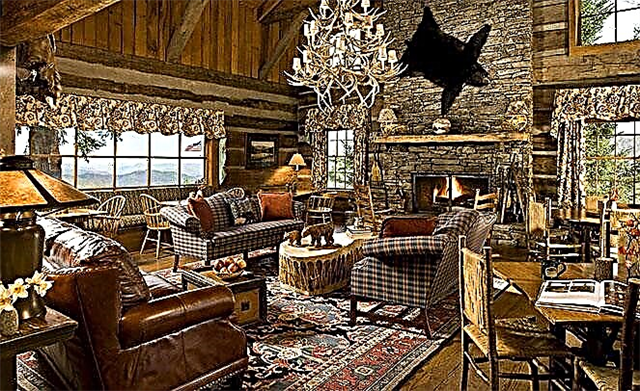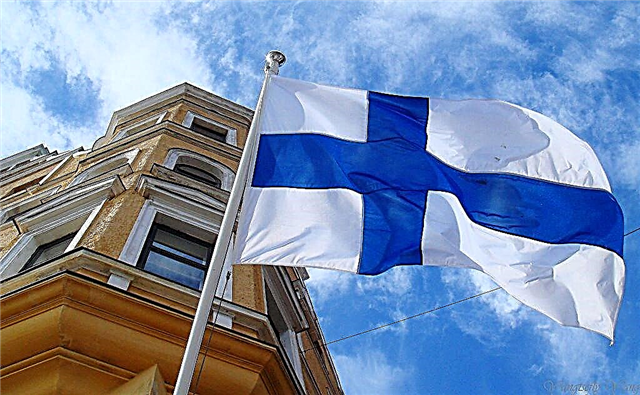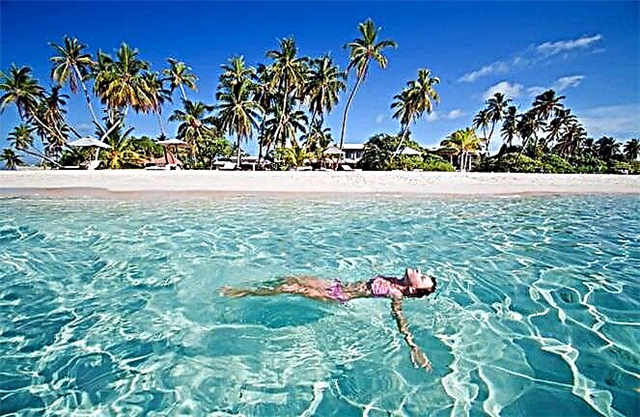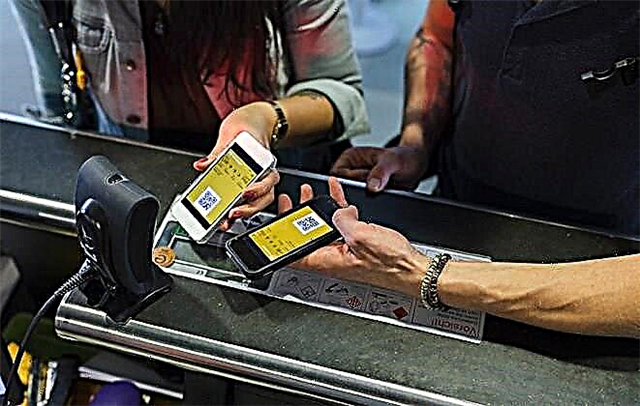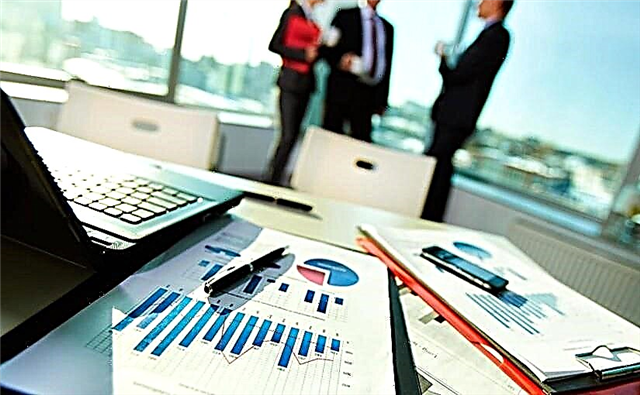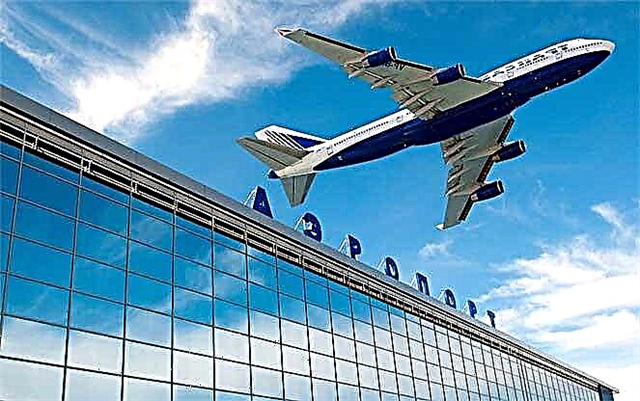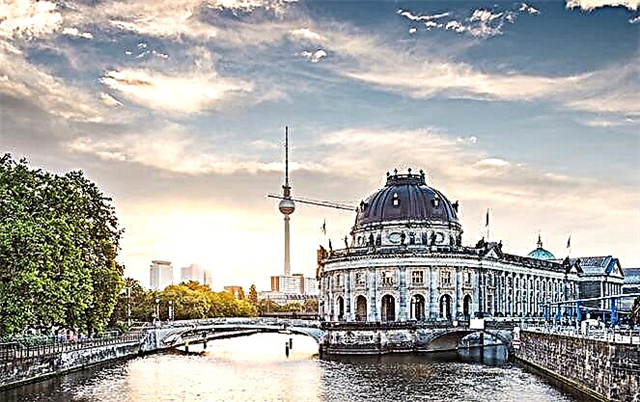The capital of Germany is a place where travelers from all over the world are striving to get. The sights of Berlin, and this is a number of cultural and historical monuments, genuine works of art that preserve the memory of the events of past centuries, attract millions of tourists every year. While in Berlin, you can re-read not only the history of this country, but Europe as a whole, and live.

Briefly about the history of the city
The capital of Germany is located in the east of the country and has federal rights as a separate region. Compared to many other European capitals, Berlin is relatively young - its official history begins in 1237, when the settlement of Cologne received the status of a city. In 1307, Cologne was united with the settlement of Berlin, which was located opposite - on the other side of the Spree River.
According to one version, the name of the settlement comes from the German word Bär, which means "bear", which is why its image was placed on the city's coat of arms.
From 1415, with the light hand of Frederick I, Berlin became the seat of the Electors - the Hohenzollern dynasty ruled it for 500 years until the fall of the empire in 1919. During this time, the city grew noticeably - the surrounding settlements were added to it, universities, theaters, and many museums appeared in it.
Gradually, the city becomes a real scientific and cultural center. Even during the Weimar Republic, as well as during the years of Nazi Germany, Berlin did not lose its importance and grew more and more.
After World War II, the city was divided for a long time between the two states formed during this period - the GDR and the FRG. With the unification of Germany, which did not happen overnight, but nevertheless took place on October 3, 1990, Berlin again became the German capital.
Today Berlin is the second largest city in Europe after London, one of the most visited on the continent, with an ambiguous history, but no less beautiful.
What to see in Berlin
Berlin delights its guests and local residents with ample opportunities for leisure activities - both active and cultural. Numerous amusement parks, cafes, shops, zoos, clubs, theaters, concert halls offer not to waste time and enjoy life. Palaces, cathedrals, fountains, parks and cozy squares will tell about themselves better than any guide, because they were the silent and majestic witnesses of the cycle of historical events. The walking route should definitely include several special places that distinguish Berlin from a number of famous historical and cultural centers.
Berlin Wall
After the war, Berlin was divided into two parts, one of which went to the Federal Republic of Germany, and the other became the capital of the German Democratic Republic, a state created at the end of the 40s of the last century. Due to the fact that soon the outflow of specialists from the socialist GDR began to the neighboring, better-off FRG, it was decided to erect a wall that would stop the drain of personnel.
As a result, the wall, which grew literally overnight on August 13, 1961, divided Berlin in two. It was built according to outdated maps, so many streets and even houses were divided into parts, such as, for example, Potsdamer Platz in Berlin, which became a real tragedy.
Until 1975, the wall was constantly modernized, as a result, it became a powerful, but rather dangerous structure.

With the beginning of perestroika in the Soviet Union, citizens of the GDR began to demand freedom, and soon after the abolition of the visa regime between East and West Germany, the Berlin Wall was destroyed - this happened on the night of November 8-9, 1989. Today, only its fragments, covered with social graffiti, have been preserved for posterity.
However, the full scale of the tragedy can be felt by visiting the Berlin Wall Museum, which is located at Bernauerstrasse 111. Here, in the place where many people died, almost 800 m of buildings were reconstructed.
The Berlin Wall Memorial Complex is open to the public from 10.00 to 18.00 from Tuesday to Saturday. For a few euros you can buy a real piece of the Berlin Wall.
Brandenburg Gate
Another famous place in Berlin is the Brandenburg Gate on Paris Square, erected in 1788-1791. At first they were called the Gates of the World, and a quadriga was installed on their top - a cart drawn by four horses, which was driven by the goddess of victory Victoria. When Napoleon conquered Berlin, he took the statue of the goddess with him as a trophy. She returned home after the overthrow of Bonaparte.
It should be noted that when changing regimes, the gates were each time decorated with the appropriate symbols: national, Nazi or communist.

In 1945, both the gate and the statue of the goddess were badly damaged. And although they were reconstructed, due to the construction of the Berlin Wall, they were inaccessible to the townspeople: they were closed from the residents of West Berlin by the wall, and the inhabitants of the GDR could not get close to them due to the installed protection systems.
After the fall of the Berlin Wall, the Brandenburg Gate took on a new meaning, becoming a symbol of German unification.
There are several museums next to them, and in the gates themselves there is a Hall of Silence, reminding the Germans of their victories and mistakes.
Royal Gate Square - Alexanderplatz
In the center of the capital, in the historic district of Mitte, there are a number of attractions, including the main square of Berlin - Alexanderplatz. Until the 17th century, the square was located behind the city's fortress wall and was used as a livestock market, and sometimes as a place for the execution of criminals.
With the growth of Berlin, the square naturally ended up within the city limits - by 1700 there were already 600 houses around it. Livestock sales were replaced by Sunday fairs, and from 1701 this place became known as the "Royal Gate Square". And only in 1805 the square received its current name in honor of the visit of the Russian Tsar Alexander I.
Alexanderplatz in Berlin is an important transport hub, so it is easy to get to it - by metro or surface public transport.

In 1945 the square was almost completely destroyed and reconstructed in 1966-1970. in a modernist socialist style. It was then that magnificent hotels, the Berlin TV Tower and the sculpture "Urania", showing all the time in the world, appeared there.
In 2006, a new reconstruction of the square began, which will end in 2021. In the meantime, you can look at the monument to Engels and Marx, dine in the cafe of the TV tower and stroll through the shopping centers located nearby. The large square is convenient for pedestrians, since public transport runs along its perimeter.
Berlin TV Tower
The tallest building in Germany can be seen from almost anywhere in Berlin on a clear day. This is the Berlin TV Tower, built in 1965-1969. at the initiative of the then head of the GDR Walter Ulbricht.

The structure has a height of 368 m, while at a height of 203 m a large sparkling ball is strung on a concrete "toothpick", rotating around its axis (it makes a full revolution in 30 minutes). It houses the most popular viewing platforms of Berlin and a restaurant, from the windows of which you can see a breathtaking panorama of the capital.
When the sun suddenly comes out from behind the clouds on a cloudy day, a cross-shaped sun glare appears on the stainless steel ball. For this, the ironic Berliners nicknamed the TV tower "St. Walter's Church", and the cross itself - "Pope's revenge" to the atheistic regime of the GDR.
Ticket prices for observation decks:
- € 9.50 - for children;
- € 15.50 - for adults.
There is a 20% discount for students.
A meal in a restaurant will cost more - from 17 € to 40 €. Pets are not allowed, except for guide dogs. For safety reasons, people in a wheelchair are not allowed here either, as they will not be able to use the emergency exit.
Opening hours: from 9.00 (in winter - from 10.00) to midnight.
Next to this symbol of the capital is the picturesque Neptune fountain, which is also worthy of attention.
Island of five museums
The northern part of Berlin's Spreeinsel Island on the Spree River was once a marshland. After laying a network of canals, the site was drained, and in 1830 the first museum was built there - the Berlin (now the Old Museum), then in 1859 - the Prussian Royal Museum (now the New), and in 1876 the first National Gallery appeared. At the same time, this part of the Spreeinsel got its name.

In the 20th century, the Museum Island in Berlin received two more buildings:
- in 1904 - Kaiser Friedrich Museum (now Bode Museum),
- in 1930 - the Pergamon Museum.
Currently, the museum complex is included in the UNESCO World Heritage Site. Here you can see a collection of ancient papyri and the famous bust of Nefertiti in the Berlin Museum of Egyptian and Primitive History. The Old Museum will delight you with an antique collection, the Old National Gallery - with examples of high art of the 18th-19th centuries, the Bode Museum - with medieval relics, and in the Pergamon Museum you can see the famous Pergamon Altar, the gate of the Miletus Market, part of the Babylonian Processional Road and the Babylonian Ishtar Gate.
Working hours: from 10.00 to 18.00, on Thursdays - until 20.00.
Entrance to each museum costs 18 €, a child ticket is 50% cheaper.
Location: 15 minutes walk from the Brandenburg Gate.
Berlin Cathedral
Berlin Cathedral is located at the entrance to Museum Island, a 15-minute walk from Alexanderplatz. It is the largest Protestant church in Germany. The cathedral was built from 1894 to 1905 and was supposed to become the main church of all Lutherans. It was built in the Baroque style, which is not typical for Protestant churches.
The Second World War made adjustments to the appearance of the cathedral. During the hostilities, the church was badly damaged - from the original 114 m in height, only 98 m remained. Fortunately, the cathedral was not destroyed, like the Monbijou palace, but it required serious reconstruction, which lasted until 1993.

Today, the observation deck, located under the very dome of the cathedral, offers an excellent view of Berlin. In addition, tourists are attracted by the opportunity to hear the organ made by the famous master Wilhelm Sauer. You can also visit the crypt of the Hohenzollern dynasty, which is located here.
Opening hours: daily from 9.00 to 20.00, on Sundays and holidays - from 12.00. In winter, the cathedral closes earlier - at 19.00.
Tickets for children will cost € 5, for adults - € 7. You can listen to a concert of organ music for no more than 20 €.
Lovers of walks in the fresh air will also appreciate the “Pleasure Garden” - Lustgarten. It is a beautifully landscaped park with a fountain, lawns and benches.
Berlin State Opera
The Berlin State Opera was founded in 1742 and became the third opera house in Germany (after Munich and Hamburg). This is one of the oldest buildings in the German capital, which is located on Unter den Linden, adorning the Mitte district.
At the time of Frederick II, it was the largest opera house in Europe, and since 1842 it has also hosted concerts of symphonic music. Almost every 100 years - first in 1843, and then in 1945, the theater building was seriously damaged, but then it was rebuilt again. Such luminaries as F. Chaliapin, R. Strauss, F. Mendelssohn performed on its stage.

After World War II, the opera ended up on the territory of the GDR. Her repertoire diminished, but performances and tours did not stop.
After the unification of Germany, the Berlin Opera became part of the world opera community again. Today, all her performances are accompanied by a symphony orchestra.
This is the Berlin State Chapel, which also performs individual symphony concerts. Spectators and critics alike note the splendor and technical sophistication of the sets. The building is currently undergoing reconstruction, but it is possible to attend performances and concerts.
Tickets cost 30-60 €, you can order them online.
There are several performances or concerts per day: the first one usually starts at 14.00, and the last one at 20.30.
A poster describing almost all Berlin cultural events can be found on the website of classical music arts.
Reichstag
The Reichstag in Berlin is one of the most notorious places, but in reality it is just a house of state assembly, which began to be built on modern Republic Square in 1884, equipped with the latest technology.

In 1933, an arson occurred in the building, and the Nazis, who had already come to power, blamed the communists for this and thus dealt with their opponents, declaring them enemies. During the war, there was a security complex and a bomb shelter here. After the partition of Germany, the destroyed building remained on the “western” side.
The building was renovated only in 1973, and the reconstruction, including the famous glass dome, took place after the unification of the country. Today this memorial is called the “Wall of Memory”, and there are traces of bullets and some inscriptions made by Soviet soldiers on it. There are observation platforms under the dome, from where you can admire the city from a height of 40 m. Now it is a place of “pilgrimage” for tourists from all over the world. Therefore, in order to get there, you must first register on the Bundestag website.
Visiting the building itself is free, but you can get inside the Reichstag only when the German parliament is not in session.
There used to be a monument to Bismarck in front of the Reichstag, but now it has been moved to the Big Star Square.
Charlottenburg
Charlottenburg Castle is the summer residence of the Hohenzollerns with a theater, a pavilion for tea ceremonies and even a mausoleum. The castle was built by Frederick I at the end of the 17th century. for his beloved wife Sophia-Charlotte and was then called Litzenburg. In 1705, after the death of the owner of the castle, it was renamed in her honor.
The castle, behind which is a beautiful garden, is considered an example of Baroque architecture. Of great interest are the Great Oak Gallery, the Porcelain Room with Chinese and Japanese collections, the White Room and the Golden Gallery, halls with Rococo paintings and French paintings, richly decorated living rooms, greenhouses ...

During the Second World War, both the park and the palace were badly damaged. It took several decades to restore them. In the early 2000s, due to renovations in the Bellevue Palace, the residence of the President of Germany was moved here. And during the restoration of the Berlin Opera, opera performances were occasionally held in the castle theater.
Although the castle is not in the very center of the capital, you can get to it from anywhere in Berlin by bus, metro or even on foot.
The entrance to the palace costs 10 €, for students and schoolchildren - 7 €. Another 3 € will have to pay for the opportunity to take pictures, but without a flash and only for personal use.
In the summer season, the palace is open from 10.00 to 18.00, and in winter - until 17.00. Weekends here on Mondays and Christmas.
Where else can you go in Berlin
Of course, this is not the end of the Berlin fun. There are several more locations that are the focus of the city's cultural and social life.
- The Tiergarten is a large park in the city center, where various celebrations and festivals are held. There is a special building here - the magnificent Bellevue Palace in Berlin, which is known as the residence of the President. You cannot visit it - you can only visit the park in front of it. In the Tiergarten you can see the Victory Column, the House of World Cultures, the Memorial to the fallen Soviet soldiers.
- The Tiergarten also houses the Berlin Zoo with an area of 35 hectares, which contains 1,500 animal species. The zoo opens at 9 am and works until 5 pm or 7 pm, depending on the season. Ticket prices range from 13 € (one-time) to 60 € (annual subscription). Children - 50% discount. If you buy tickets online, they are valid for 2 years.
- Unter den Linden is Berlin's longest street, home to many interesting sites, from the opera and museums to the Frederick the Great monument, a famous sculpture that can often be seen on postcards.
- Treptower Park is not as popular as the Tiergarten, it is quieter and less crowded. There is a monument to the "Soldier-Liberator", better known as "Alyosha Monument". It is a sculptural image of a Soviet soldier holding a little girl he saved in his arms.
- Berlin City Palace on the Spreeinsel Island - the government building was built on this site in the 18th century, it was changed and destroyed many times. In the days of the GDR, this place was the Palace of the Republic, in which meetings of the People's Chamber were held. In 2008, it was demolished and now they promise to complete a completely new version of the city palace in the spirit of structuralism by 2021.
- The Spandau Citadel is interesting for both lovers of medieval buildings and admirers of military history. This ancient large-scale building is located near the Tiergarten. The citadel is famous for the fact that the last refuge of the Nazis was located here, which, however, they surrendered without a fight. Now there is a museum, cafes and many interesting corners.
Berlin is filled with evidence of its difficult history, however, there are also many different shopping centers, water parks, theaters and cathedrals. Fans of city life can visit Rosa Luxemburg Square, Gendarmenmarkt, Potsdamer Platz or the Botanical Gardens. And those wishing to learn more about the German capital are even offered a special excursion "The Character of Berlin", showing the city from the most unexpected sides.
Finally
Berlin is a very interesting city with many different attractions. Each stage of its centuries-old history left its imprint on it: the buildings of the Museum Island, luxurious castles and cathedrals remind of the era of the Hohenzollern rule, the GDR period left in memory the strict geometry of the restored Alexanderplatz, the unusual architecture of the TV tower and the terrible memory of the Berlin Wall.
To visit these unusual places, 2-3 days is not enough. So it is worth planning your trip for at least a week.
And if you ignore the historical monuments, organ music, views from observation decks, you will find that Berlin is also full of nightclubs, festivals, concerts, amusement parks - like any big city.



